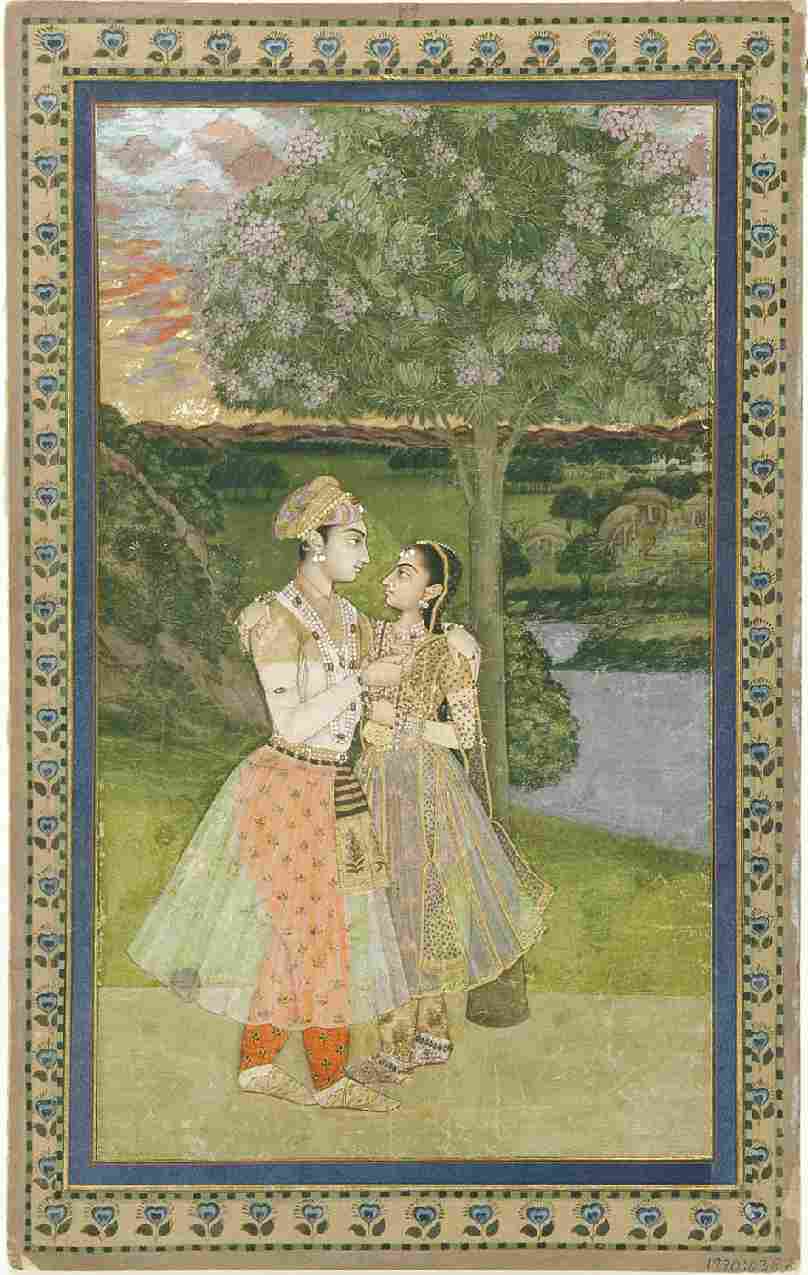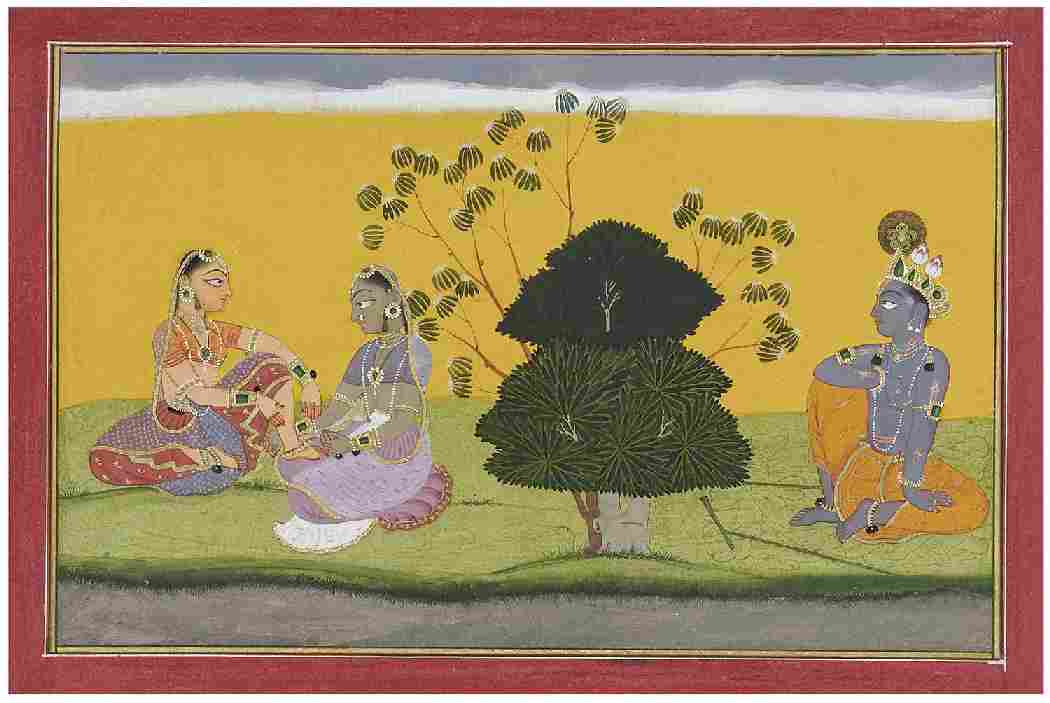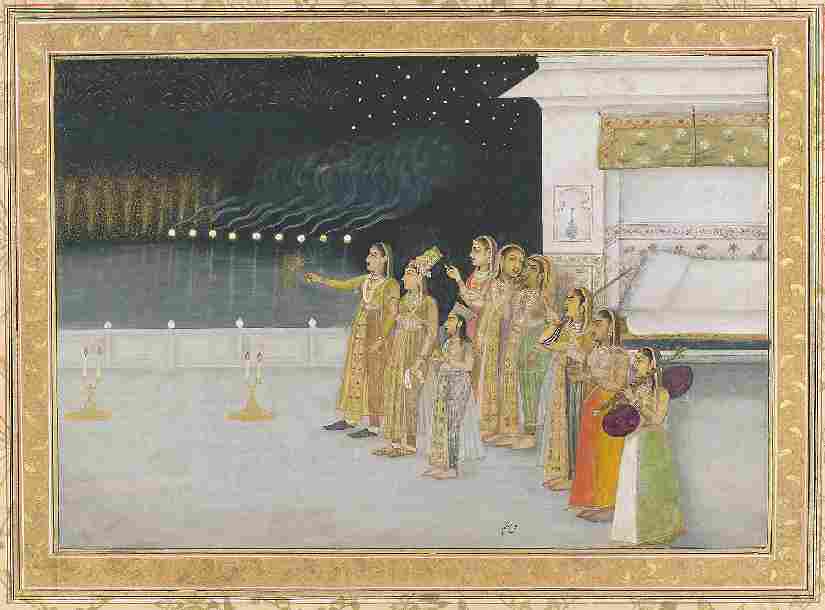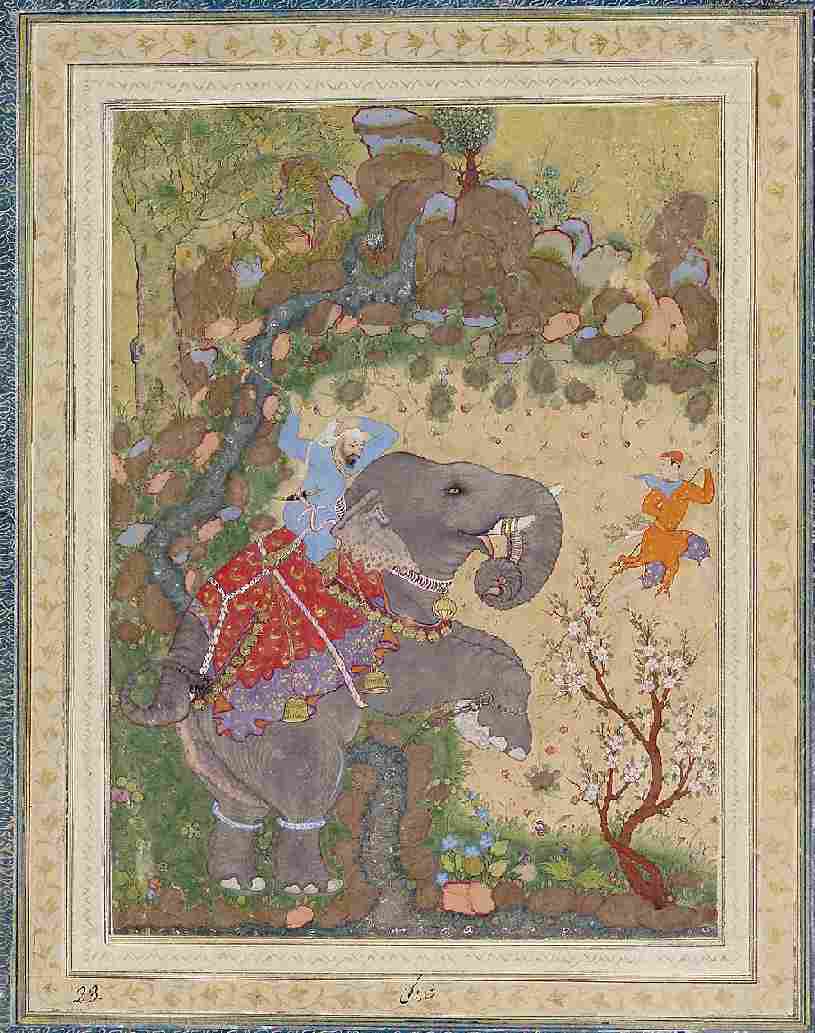Contribute
| Domains Of Wonder - Masterworks Of Indian Painting At The MFA |
08/30/2006
FIVE CENTURIES OF INDIAN MASTERPIECES ON VIEW AT Ambassador of Additionally, a new Museum acquisition by contemporary artist Shahzia Sikander, a large striking canvas titled Pathology of Suspension #6 (2005), will be on view in close proximity to Domains of Wonder, as well as an installation titled Telling Tales: Generating Narratives from Indian Paintings, comprising a superb selection of paintings from the MFA’s own collection that illustrate widely-told Indian tales. “Domains of Wonder brings to Painting in I. Terse Assertions (Jain, Sultanate, and Other Works) Artists of the 14th and 15th centuries concisely and emphatically stated their subjects on the pages of manuscripts or within complex devotional icons, as seen in the works in this section such as The worlds of gods and saviours: vividh tirtha-patta (early 15th century). This two-dimensional icon shows a Jina, a liberated being and main object of worship for followers of Jainism, sitting in meditation within an elaborate temple. II. Rooted in the Earth (Works Derived from Mostly Pre-Mughal Sources) This section highlights how the indigenous painting traditions of III. Devotion, Passion, and Heroism (Paintings from Rajasthani Courts) Rajput painting from the northwestern state of Rajasthan consists of works made for princes and nobles during the time of the Mughal empire (about 1550-1850). Each court developed its own aesthetic, however they all admired formal, aristocratic refinement, as well as the thrill of the hunt. In The final battle: the Goddess takes down the demon, Shumbha (about 1700) by Sirohi Rajasthan and taken from a Devimahatmya––the most sacred text for those who worship the goddess as the supreme divinity––the goddess is battling with demon brothers who have wreaked havoc on the world. IV. Engaging with the Visible World (Mughal Paintings) Artists who were trained in both Indian and Persian traditions worked together in an atelier (a royal painting workshop) to produce work for their patrons, the Mughal emperors. Examples in this section include the painting Lovers by a Tree (about 1725)––depicting a stolen moment between two young lovers amid a verdant landscape. V. Sultans and Mystics (Works from the The Deccan Plateau is a vast area which encompasses most of central and southern VI. Clarity of Vision (Paintings from Pahari Workshops) The Pahari region, also known as the Punjab Hills, lies in the western foothills of the VII. Different Strands (Works from Local and Important artistic movements, aside from the mainstream Mughal or Rajput styles, developed in other regional centers throughout VIII. Changing Tastes (Paintings Made Chiefly under European Influence) In the 18th and 19th centuries, British colonial presence resulted in major shifts in the styles of paintings produced in “We’re extremely pleased to continue the Museum’s profound connection with India initiated nearly a century ago by the groundbreaking scholar and theorist Ananda Coomaraswamy, the MFA’s first curator for Indian art,†said THE BINNEY COLLECTION In 1990, the late Edward Binney 3rd, heir to the Crayola fortune, bequeathed his collection of South Asian art to the San Diego Museum of Art. Comprising over 1,450 works, this encyclopedic collection has examples of nearly every court, style, movement, and subject from all regions of the Indian subcontinent. The works range in date from the 6th through 20th centuries, with the strength of the collection in paintings from EXHIBITION ORGANIZATION/TOUR Domains of Wonder has been organized by the San Diego Museum of Art and will be at the MFA (September 20-November 26, 2006) before traveling to the Dallas Museum of Art (November 18, 2007–January 27, 2008) and the Cincinnati Art Museum (June 1–September 28, 2008). PUBLICATIONS Domains of Wonder: Selected Masterworks of Indian Painting, a full-color catalogue published by the This fall, the MFA releases Indian Painting from Cave Temples to the Colonial Period, the first publication in 75 years to draw extensively on the MFA’s world-renowned collection of Indian paintings. By Joan Cummins, the book features 120 masterworks from the MFA’s collection, many of them reproduced in color for the first time. It is available in a hardcover edition for $50, and softcover for $35. Both books are available at the MFA Bookstore and Shop, online at www.mfa.org or by calling 617.369.3575. ALSO ON VIEW Telling Tales: Generating Narratives from Indian Paintings, a selection of paintings that were commissioned by court artists to tell well-known tales, will be on view in the Indian Corridor adjacent to the Domains of Wonder exhibition. In addition to these historical works, a new Museum acquisition by contemporary artist Shahzia Sikander will also be on view. Purchased with funds donated by the Barbara Lee Endowment for Contemporary Art by Women and the Charles Bain Hoyt Fund, Pathology of Suspension #6 (2005) is the first work by Sikander to enter the MFA’s Contemporary collection. In early October, it will be moved and included in an exhibition of recent acquisitions of contemporary art in the Museum’s Rabb Gallery (October 7–November 26, 2006). Sikander’s painting is a striking complement to the miniature painting found in Domains of Wonder. A native of DIGITAL PHOTOGRAPHY Available upon request. Please contact # # # The
Open seven days a week, the MFA’s hours are: Saturday - Sunday
General admission (which includes two visits in a 10-day period, but does not include Gund Gallery exhibitions) is $15 for adults and $13 for senior citizens and students age 18 and above. Students who are University Members are free. Admission is free for children 17 years of age and under during non-school hours. Thursday and Friday evenings after 5 p.m., admission is reduced by $2. Wednesdays after 4 p.m., admission is by voluntary contribution. The Museum is closed on New Year’s Day, Patriot’s Day, Independence Day, Thanksgiving, and Christmas. For general visitor information, visit the MFA Web site at www.mfa.org or call 617.267.9300
You may also access this article through our web-site http://www.lokvani.com/

Lovers by a Tree Mughal, Muhammad Shah period, about 1725
Opaque watercolor and gold on paper * San Diego Museum of Art, Edwin Binney 3rd Collection, 1990:382 *Courtesy, Museum of Fine Arts, Boston

Asking Her to Leave Her Noisy Anklets Behind and Go
Folio from a Gita Govinda series By Manaku of Guler, 1730
Opaque watercolor, gold, and beetle-wing cases on paper

Celebrating with Fireworks Attributed by inscription to Hashim Late Mughal, Muhammad Shah or Oudh period, about 1735

The Enraged Elephant Mughal or Deccani, ca. 1600 Opaque watercolor and gold on paper